Study on medication rules of traditional Chinese medicine for Meniere's disease based on data analysis
Hui-Jie Zhang, De-Hui Yin, Miao-Fang Su, Xin-Ran Zhai, Gui-Min Chen✉
1. Basic Medical College of Heilongjiang University of Traditional Chinese Medicine 150040, China
2. Hainan Medical College, Haikou 571101, China
ABSTRACT Objective: Study on medication rules of traditional Chinese medicine in treating Meniere 's disease based on data mining technology. Methods: Computer retrieval with since establishment of the“CNKI”, “WF”, “VIP”, there have been literatures on the treatment of Meniere syndrome with Traditional Chinses medicine. Memory preprocessing in accordance with inclusion criteria. Then, EXCLE 2010, SPSS Statistics (ver. 25) and SPSS Modeler (ver.18.0) were adopted respectively for frequency analysis, cluster analysis and association rules analysis. Result: A total of 133 references were included in this study, 146 prescriptions,192 kinds of drugs, and the total frequency of drugs was 1702. The high frequency Meniere syndrome types were spleen deficiency and phlegm dampness syndrome, wind phlegm syndrome, gallbladder depression and phlegm disturbance syndrome, hyperactivity of liver yang syndrome, phlegm and blood stasis syndrome. The efficacy of drug frequency ≥ 25 were summarized as follows, antiasthmatic drugs for relieving phlegm and relieving cough, diuresisremoving dampness, Tonic drugs, etc. High frequency meridian of drugs are: lung, liver,spleen, etc. High frequency drug properties are: temperature, cold, flat etc. High frequency drug taste: bitter, sweet, pungent, etc. Core drugs: Pinellia, Atractylodes, Poria, Gastrodia,etc. The main prescriptions werealisma soup, Banxia Baizhu Tianma Decoction, Zhengan Xifeng Decoction and Xiaochaihu Decoction. Conclusion: In this study, data mining was used to sort out the treatment of Meniere ' s disease by traditional Chinese medicine. It was found that the treatment of Meniere ' s disease was mainly to calm the liver and strengthen the spleen, supplemented by regulating qi and activating blood, clearing heat and opening orifices,tonifying deficiency and tranquilizing mind.
Keywords:Meniere's disease Medication rule Vertigo Medication law Data analysis
1. Introduction
Meniere ' s disease, also known as Meniere ' s syndrome, was first proposed by French physician ProsperMénière in 1861. In 1938,it was found that the pathology was membranous labyrinthine hydrops, and the pathological reasons were not yet clear. The main clinical manifestations were inner ear fullness, paroxysmal vertigo, hearing loss, tinnitus, or vertigo with nausea, vomiting,and sweating, which gradually alleviated after several hours. The disease corresponds to vertigo in traditional Chinese medicine.Recorded in Suwen Liu Yuanzheng’s General Theory:”When hapetic qi stagnatin, even tinnitus, dazzling, blindfolded, tyrannical servants”. On Zhang Jingyue:”the dizziness caused by debility”;On Zhu Danxi:” no phlegm and no vertigo”. These theories have guiding significance in clinical diagnosis and treatment. Commonly used prescriptions are Sijunzi Decoction, Siwu Decoction, Guipi Decoction, Banxia Baizhu Tianma Decoction, Erchen Decoction,etc. In order to explore the regular medication rules of traditional Chinese medicine in the treatment of this disease, this paper finds out the corresponding compound from the database containing traditional Chinese medicine in the treatment of this disease, and uses data mining technology to process, mine, summarize and summarize the commonly used medication rules, and find out the core drugs.
2. Data and methods
2.1 Data source
This article collected data from China National Knowledge Infrastructure ( CNKI ), Wanfang database ( WF ), VIP network,using search function to' Meniere disease', 'Meniere syndrome', 'vertigo', 'otogenic vertigo' as keywords, since the establishment of the database since the use of traditional Chinese medicine in the treatment of Meniere disease literature, a total of 246 articles were screened, a total of 133 articles were screened by inclusion criteria and exclusion criteria. 146 prescriptions were used.
2.2 Inclusion criteria
(1)diagnosed as Meniere's disease; (2)Complete clinical case information ; ( 3 ) Cases from personal experience or clinical observation ; 4 the use of traditional Chinese medicine treatment has a complete diagnosis and treatment process, prescription drugs, clear dose ; ( 5 ) Patients take traditional Chinese medicine regularly, and have curative effect literature.
2.3 Exclusion criteria
(1)Literature review on Meniere’s disease ; (2)Literatures on other treatment methods ( combination of Chinese and Western medicine,acupuncture, massage, etc. ) ; (3)Animal experimental research literature ; (4) different literature studies on the same prescription ;(5)Degree papers.
2.4 Data cleaning
Chinese medicine syndrome type reference Differential Diagnosis of TCM Syndromes second edition [2] and Diagnostics of Traditional Chinese Medicine third edition [3] for correction, Chinese medicine name reference Chinese medicine fourth edition [4] and Chinese Pharmacopoeia 2020 edition [5] for correction. In order to prevent the reduction of the frequency of traditional Chinese medicine and affect the calculation of drug association rules, standardize drugs. Such as:Poria → Poria ; yam meat → cornus officinalis ; Raw turtle board→ turtle shell ; Yuanhu → Yanhusuo ; fairy spleen → Epimedium; Paul ginseng → Nansha ginseng ; Qianren → Qianzi ; White chrysanthemum, wild chrysanthemum → chrysanthemum, etc.
2.5 Data mining
Input the collected data to Microsoft Excel 2013 for standardized preprocessing and frequency analysis ; Establish matrix, using SPSS Statistics25 cluster analysis, the core drug tree diagram ; Association rule network diagram in SPSS Modeler18 was used to analyze highfrequency drugs, and Apriori algorithm was used to calculate the correlation between drugs.
3. Result
3.1 Induction of syndrome types
A total of 21 types of different syndromes were obtained from 133 selected literatures after standardization. The five syndromes with the highest frequency were 57 ( 38.51 % ) with spleen deficiency and phlegm dampness, 15 ( 10.13 % ) with wind-phlegm syndrome, 13( 8.78 % ) with gallbladder depression and phlegm disturbance, 12 (8.10 % ) with liver yang hyperactivity, and 9 ( 6.80 % ) with phlegm and blood stasis. These five syndromes accounted for 75.68 % of the total syndromes.
3.2 Drug frequency analysis
A total of 146 prescriptions were screened out from 133 literatures,involving 192 drugs, of which the highest drug frequency was 98,the lowest drug frequency was 1, and the total drug frequency was 1702. The drug frequency ≥ 25 was listed in table 1, and a total of 23 drugs were classified. The drug efficacy of high frequency were: Phlegm relieving cough and asthma, diuresis and dampness,tonifying deficiency, calming liver and wind, regulating qi, relieving exterior, promoting blood circulation and removing blood stasis,opening orifices, clearing heat and tranquilizing mind.
3.3 Analysis of drug meridian frequency
The meridian tropism statistics of drugs with frequency ≥ 25 were involved in the meridian tropism of five viscera and six fu organs. The meridian tropism of drugs with frequency ≥ 8 were: lung meridian 12 times ( 18.8 % ), liver meridian 10 times ( 15.6 % ),spleen meridian 10 times ( 15.6 % ), stomach meridian 8 times ( 12.5% ), heart meridian 8 times ( 12.5 % ), see figure 1.
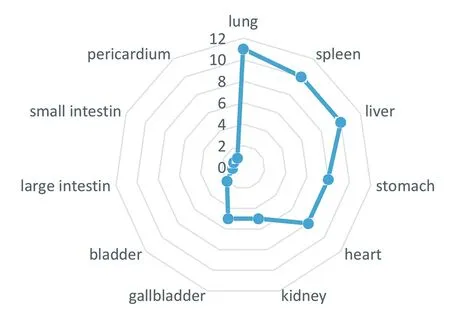
Figure 1 Frequency of meridian regression of high-frequency drugs
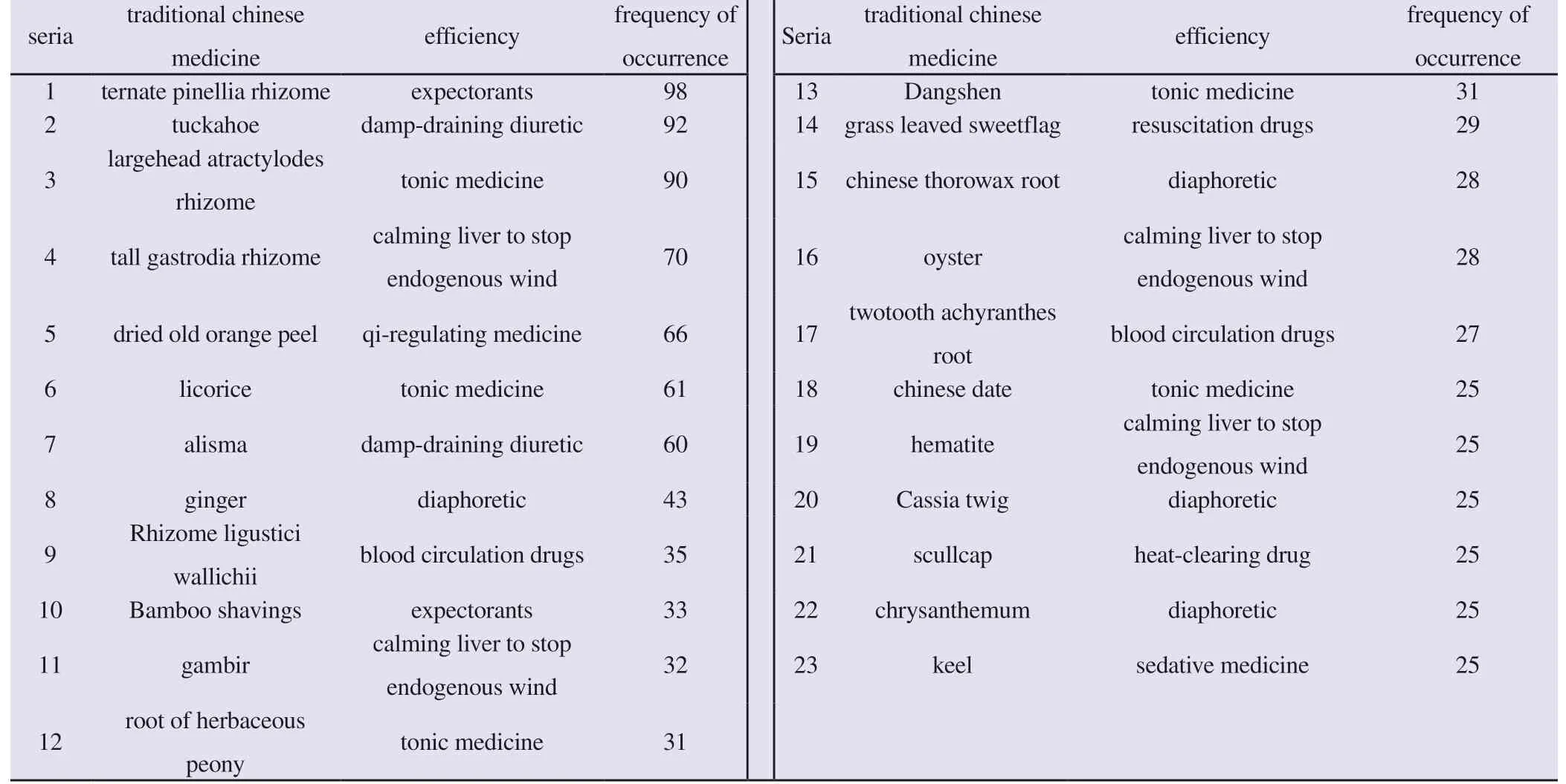
Table 1 Medication for Meniere 's disease ≥ 25 times and efficacy
3.4 Analysis of drug property frequency
The drug property frequency of drugs with frequency ≥ 25 was analyzed. The drugs with mild temperature were classified into warm drugs, and the drugs with mild cold were classified into cold drugs for statistics. There were four types of drug property, including eight warm drugs, eight cold drugs, six flat drugs, and one cold drug,as shown in Fig. 2.

Figure 2 Frequency chart of high frequency drug properties
3.5 Analysis of drug taste frequency
The frequency of drug flavors with frequency ≥ 25 was analyzed,and seven kinds of drug flavors were obtained: sweet 12, bitter 9,pungent 7, light 1, sour 1, salty 1, and astringent 1.

Figure 3 High frequency drug taste frequency
3.6 Analysis of drug association rules
The frequency ≥ 25 drug association rules Apriori algorithm analysis [ 6 ], drug association network diagram shows as Figure 4. It can be concluded that Pinellia - Atractylodes - Poria is the most closely related. Set minimum support ( the frequency of simultaneous occurrence of the preceding and the following drugs in a prescription ) and minimum confidence ( the probability of occurrence of the latter under the premise of the preceding item ) to calculate the hidden correlation between the two drugs. Set the lifting degree ≥ 1. Firstly, the minimum support was set as 15 %, the minimum confidence was set as 90 %, and the maximum number of antecedents was set as 1, and a total of 17 pairs of drug combinations were obtained. A total of 23 pairs of drug combinations were obtained by setting the minimum support degree as 10, the minimum confidence degree as 90 %, and the maximum number of preceding items as 2. Because licorice is an adjuvant in many prescriptions,not the main drug, 16 pairs of drug combinations with the maximum number of antecedents of 1 were obtained after eliminating licorice in association rules ( see table 2 ). There are 14 pairs of drug combinations with the maximum number of antecedents of 2 ( see table 3 ), arranged from large to small according to support.
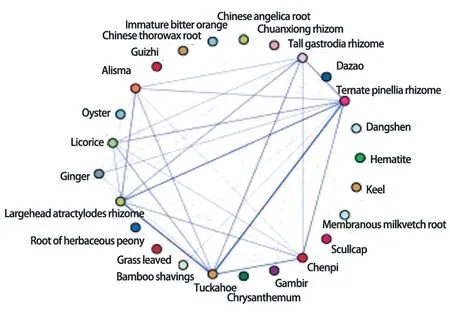
Figure 4 High Frequency Drug Association Rule Network Graph
3.7 Cluster analysis of drugs
Cluster analysis was performed on the drugs with frequency ≥25 in the prescription [7]. The minimum cluster number was set to be 5, and the maximum cluster number was set to be 10. The clustering relationship of drugs was shown by pedigree chart. Drugs are mainly divided into three categories. Type 1 calm the liver and nourishing yin: Oyster - keel - paeony - Achyranthes - Uncaria -Chrysanthemum - Ochra ; type 2 dehumidification and expectorant:Atractylodes - Alisma - Gastrodia - Guizhi - Poria - Pericarpium -Pinellia - Glycyrrhiza - Bamboo - Acorus calamus ; type3 Relieving depression and nourishing blood: Chaihu-Scutellaria-Ginger-Dazao-Pe Codonopsis-Ligusticum Chuanxiong, see figure 5.
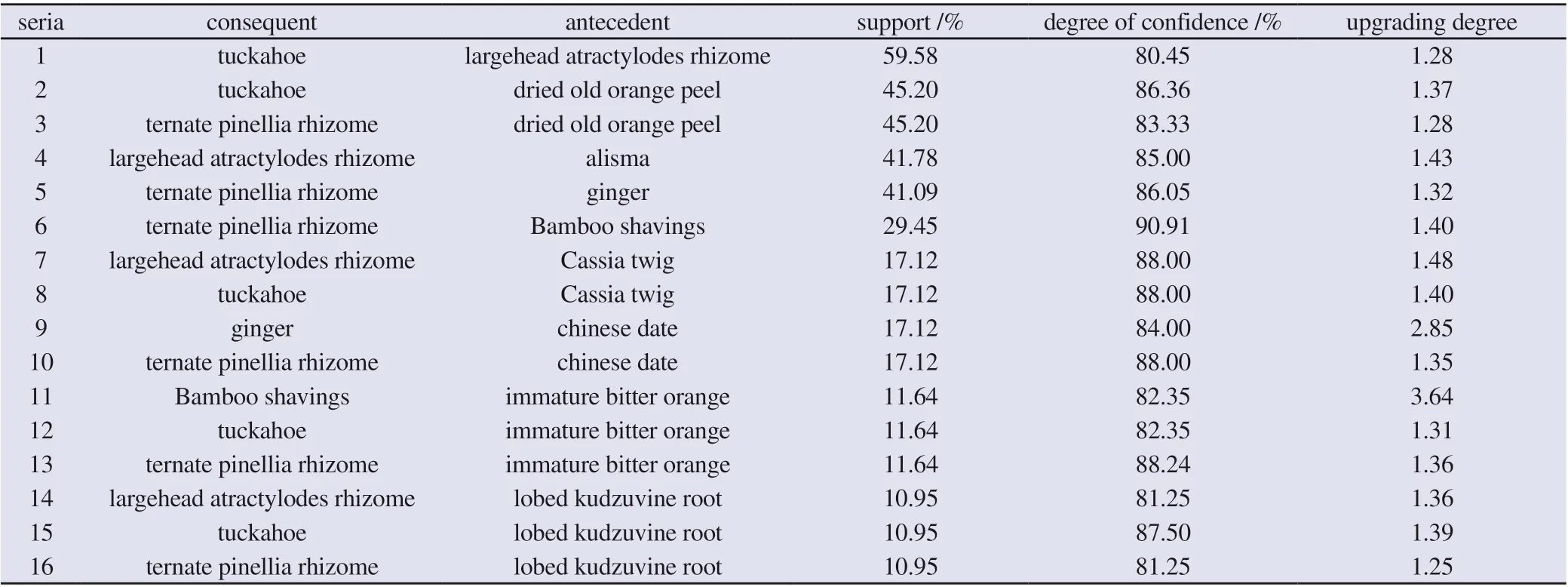
Table 2 High frequency drug pair association rules

Table 3 High frequency drug pair association rules
High frequency drug clustering tree 5
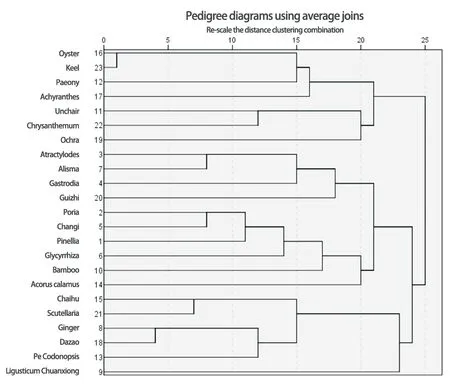
Figure 5 High frequency drug clustering tree
4. Discussion
Since the pathogenesis and etiology of Meniere's disease are not clear, there is no effective prescription for treatment. Western medicine mainly treats this disease with diuretics, steroids,gentamicin infusion via tympanic cavity, pulse compression therapy,endolymphatic sac surgery, vestibular nerve resection, and vestibular rehabilitation physical therapy [8]. Traditional Chinese medicine has a long history of understanding this disease, Wu Jie and so on [9] from the wind, fire, cold, wet and dry five qi argument, with the liver and spleen most closely. Professor Wang Jinqiao [10] The use of Chaihu Guizhi Ganjiang Decoction in the treatment of liver stagnation and gallbladder heat, spleen deficiency type Meniere ' s disease,the effect is more significant. Hou [11] treated this disease from qi,blood and phlegm and gave tonic-Yiqi Decoction, Banxia Baizhu Tianma Decoction, Lingguizhugan Decoction, orifice-freeing bloodquickening Decoction and Qingxie Gandan Decoction. Professor Wanyuan Tie [12] Treat Meniere' s disease with gallbladder-warming Decoction. They all reflect the theory that ‘ all winds fall into dizzy,all belong to liver ’ and ‘ no phlegm does not make dizzy ’ [13]. Then add and subtract the prescription according to the deficiency, excess,yin and yang of the patient.
4.1 Medication analysis of Meniere ' s disease syndromes
According to Excel, the main syndromes of Meniere's disease are divided into: spleen deficiency and phlegm dampness syndrome,wind phlegm syndrome, gallbladder depression and phlegm disturbance syndrome, hyperactivity of liver yang syndrome, phlegm and blood stasis syndrome. The main cause of this disease is internal injury, which is mainly due to improper diet, poor mood, fatigue and other causes of spleen dysfunction, liver disorders, and spleen deficiency and phlegm dampness. It is proved that dampness is the main pathological factor of Meniere's disease, and due to spleen deficiency and phlegm accumulation, depression and internal heat,dizziness, vomiting, irritability and so on. Therefore, this study is basically consistent with clinical syndromes and can guide clinical syndrome differentiation.
4.2 Medication analysis of Meniere's disease
A total of 23 drugs with frequency ≥ 25 were screened from the literature prescriptions. According to their efficacy, they were phlegm-relieving and cough-relieving and asthma-relieving drugs, water-relieving and dampness-resolving drugs, deficiencyreinforcing drugs, liver-relieving and wind-relieving drugs, qiregulating drugs, exterior-resolving drugs, blood-activating and stasis-resolving drugs, orifice-opening drugs, heat-clearing drugs and tranquilizing drugs. The top seven drugs were Pinellia, Poria,Atractylodes, Gastrodia, Pericarpium Citri Reticulatae, Glycyrrhiza uralensis, Alisma orientalis.
(1) Pinellia is a expectorant cough antiasthmatic drug, pungent,warm, spleen, stomach, lung meridian [5]. Efficacy: Dry wet phlegm, antiemesis vomiting, Dissipation resolving mass [5].Modern pharmacological studies on chemical constituents of Pinellia ternata showed that alkaloids in Pinellia ternata can relieve cough, expectorant, anti-inflammatory, anticancer, treatment of Parkinson's disease [14] ; Cerebroside compounds have antiemetic and anti-biological activities ; Polysaccharides have anti-cancer and antioxidant effects, etc. [15]. In addition, pinellia has a certain toxicity,in modern animal experiments toxic protein needle crystal for mucosal irritation components ; Banxia protein can cause abortion.But have not reported the clinical application of decoction Pinellia toxic [16]. The vomiting symptoms caused by Meniere's disease can strengthen spleen and remove phlegm, and stop vomiting.
(2) Poria is a moisturizing medicine, sweet, light, flat, lung,spleen, kidney meridian [5]. Efficacy: damp-draining diuretic, Spleen Ningxin [5]. Chemical constituents mainly contain triterpenoids,sterols, proteins, amino acids, etc. Its pharmacological effects include diuresis and dampness, invigorating spleen and harmonizing stomach, tranquilizing heart and tranquilizing mind, antiinflammation and improving immunity [17]. Poria has always been used as medicine and food homology, the use of great value, no side effects [17]. Is the treatment of Meniere ' s disease spleen deficiency and phlegm dampness type of essential medicine, in the Medicine must read phlegm and drink records: ' the spleen is the source of phlegm, the lung is the sputum storage device', the spleen of the healthy movement of phlegm can be dispelled.
(3) Atractylodes is tonic, bitter, sweet, warm, spleen, stomach meridian [5]. Efficacy: Drying dampness and diuresis, invigorating spleen and replenishing qi, stopping sweating, miscarriage [5].Atractylodes mainly contains volatile components, lactones,flavonoids, glycosides, polysaccharides, etc. [18]. Its pharmacology mainly acts on the digestive system, urinary system and immune system, and has the effects of regulating water metabolism, antiinflammatory and analgesic, repairing gastric mucosa and inhibiting bacteria [18]. It can effectively eliminate inflammation and improve the constitution of patients in the treatment of Meniere’s disease.
(4) Gastrodia elata is a medicine for calming the liver and calming the wind. Its nature is sweet and flat[5]. Efficacy: Relieving wind and spasm, calming liver yang, dispelling wind and dredging collaterals[5]. Gastrodin is the main chemical composition of Gastrodia.Gastrodin can effectively inhibit vertigo, hypnotic sedation and analgesia through the blood-brain barrier [19].
(5) Chenpi is a medicine for regulating qi, bitter, pungent, warm,return to the lung, spleen [5]. Efficacy: regulating qi and invigorating spleen, drying dampness phlegm [5]. The content of flavonoids increased gradually due to the extension of storage time. Flavonoids can effectively relax blood vessels and reduce blood pressure. Has anti-inflammatory, antioxidant effect [20].
( 6 ) Licorice is tonic, sweet, flat, heart, lung, spleen, stomach meridian [5]. Efficacy: Bupi Yiqi, Qingrejiedu, expectorant cough,relieve pain, reconcile the various drugs [5]. Glycyrrhiza uralensis contains triterpenoids, total flavonoids, glycyrrhizic acid and other components [21]. It has antioxidant, anti-inflammatory, immune regulation, anti-ulcer, anti-cancer effects [21]. In the treatment of Meniere ' s disease can replenish spleen qi, make spleen healthy phlegm can be eliminated.
(7) Alisma orientalis is a moisturizer, sweet, light, cold, kidney,bladder meridian [5]. Efficacy: diuresis, dampness, heat, turbidity and lipid-lowering [5]. Alismatis Rhizoma contains triterpenoids,sesquiterpenes, diterpenes, sugars and so on [22]. It has the effects of lowering blood lipid and protecting liver, anti-cancer, antiinflammatory and antioxidant [22]. Alisma Decoction in the Treatment of Meniere ' s Disease. In Synopsis of Golden Chamber:' There is a drink under the heart, the people glare, Alismatis Decoction. Atractylodes invigorating spleen to help transport,Alisma orientalis can make water to eliminate drink evil.
4.3 Analysis of association rules of high frequency drugs
Using data mining technology to study the drug pair of traditional Chinese medicine in the treatment of diseases can find the hidden compatibility relationship, which has guiding significance for clinical application. A total of 16 drug pairs and 14 drug groups were obtained through this association rule analysis. Among the 16 drug pairs, the main method is invigorating spleen and removing dampness. The phlegm dampness and heat are accompanied by Bamboo shavings and Alisma orientalis, and the phlegm and qi are combined with aurantii fructus. In the 14 drug groups are still given priority to with spleen dampness, spleen deficiency is liver, then add tall gastrodia rhizome calming liver to stop endogenous wind to treat the symptoms, specimens with treatment, to remove the root.There are still phlegm long accumulated heat compatibility Bamboo shavings heat phlegm, except trouble vomiting [5].
4.4 Cluster analysis of high-frequency drugs
Through cluster analysis in data mining, new prescriptions for the effective treatment of Meniere’s disease can be developed,which will play a guiding role in subsequent experimental and clinical studies. The first group is oyster, keel, paeony, achyranthes bidentata, rhynchophylla, chrysanthemum, ochra, from the drug composition analysis is the composition of modified Zhengan Xifeng decoction for liver and kidney yin deficiency, hyperactivity of liver yang patients. The second group included Rhizoma Atractylodis Macrocephalae, Rhizoma Alismatis, Rhizoma Gastrodiae, Ramulus Cinnamomi, Poria, Pericarpium Citri Reticulatae, Rhizoma Pinelliae, Radix Glycyrrhizae, Rhizoma Zhuru and Rhizoma Acori Tatarinowii, and the prescriptions included Rhizoma Alismatis Decoction, Rhizoma Pinelliae Rhizoma Atractylodis Macrocephalae and Gastrodiae Decoction, Wuling Powder and Wendan Decoction,which were used for patients with phlegm-dampness trapped spleen and liver wind disturbance. The third group of Bupleurum,Scutellaria baicalensis, ginger, jujube, Codonopsis pilosula,Chuanxiong, minor chai hu decoction is an important part of Shaoyang pivot adverse, depression and heat patients.
In summary, traditional Chinese medicine has great advantages in the treatment of Meniere’s disease in clinical practice, and its pathological mechanism is mainly phlegm-dampness. Just as the pathological results of Western medicine research are similar to those of memantine hydrops. Through literature search, sorting out the prescriptions for the treatment of Meniere's disease, using data mining technology to summarize the basic pathogenesis of Meniere's disease syndrome types, medication characteristics, can effectively guide clinical practice, but based on the statistical mining of literature reports, there are some shortcomings, the collected data still need further experimental or clinical research to be improved.
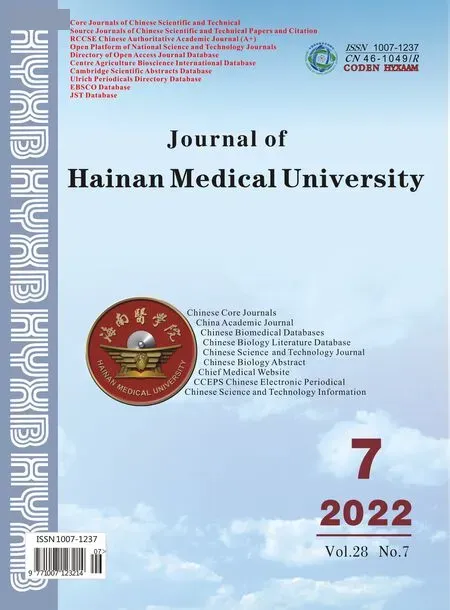 Journal of Hainan Medical College2022年7期
Journal of Hainan Medical College2022年7期
- Journal of Hainan Medical College的其它文章
- Analysis on medication rule of traditional Chinese medicine treating chemotherapy-induced diarrhea based on traditional Chinese medicine(TCM) inheritance computing platform system
- Efficacy and safety of traditional Chinese medicine in the treatment of coronary heart disease complicated with anxiety and/or depression after PCI: A systematic review and meta-analysis
- Effect of Xifeng Capsule on blood stasis in patients with rheumatoid arthritis by regulating miR-126-VEGF/PI3K/AKT signaling pathway
- Design and characterization of a bifunctional bybrid antibacterial peptide LLH for bactericidal/endotoxin neutralization effects
- Box-Behnken response surface method combined with fingerprint to optimize the extraction process of total anthraquinone from Cassia seeds
- Effect of Zhiyang Pingfu Liquid on epidermal growth factor receptor inhibitor-related skin lesion
